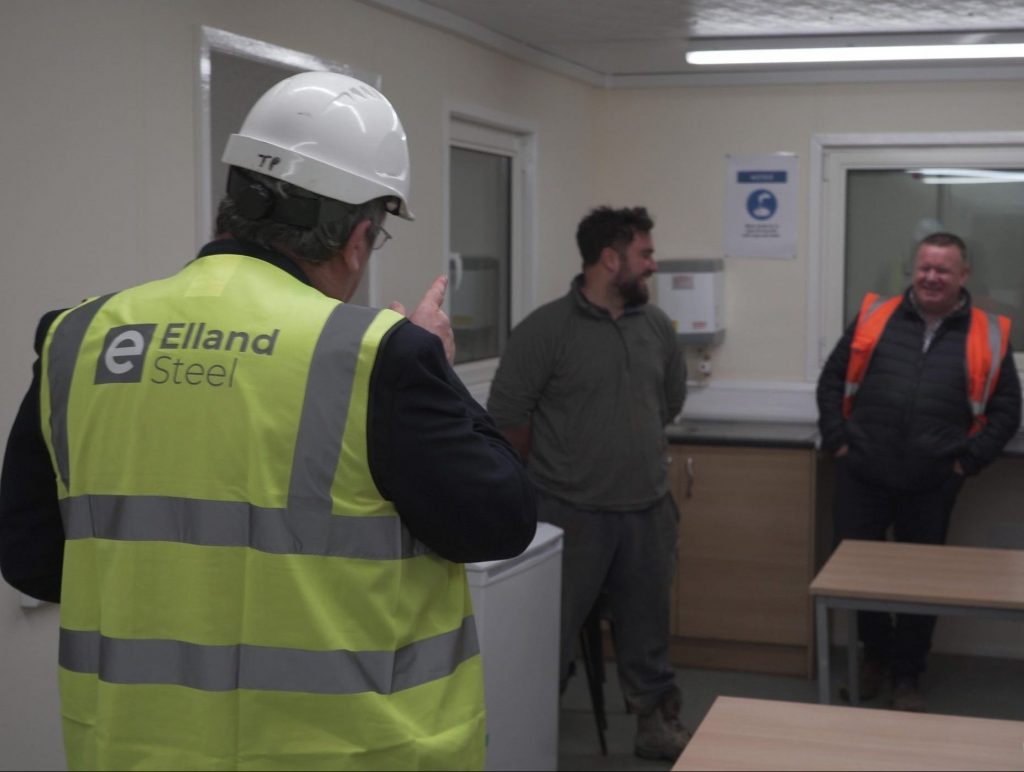There is inherent risk in many activities in construction, making safety the most important factor on any construction site.
According to the UK’s Health and Safety Executive (HSE), 3% of the 2 million workers operating in the sector, sustain work-related injuries each year and accident-related fatalities within the sector are more than twice the average of other industries.
Understanding, respecting and adhering to health and safety legislation and regulation is vital. As well as keeping workers and sites safe, it can also deliver additional benefits, including on-time and on-budget delivery and affording reputational and environmental benefits.
At Elland Steel we see legislation and regulations as a baseline for safety and work to mitigate risks in all our operations. Our HSQE Manager is a Chartered Safety and Health Practitioner, holding an accredited membership of the Institute of Occupational Safety and Health. As chairman of the Health and Safety committee at the BCSA, he is a trusted leader in our industry. However, we are also clear that health and safety is everyone’s responsibility. Our team of professionally trained workers understand the importance of safety; from wearing the correct PPE to implementing policies and following processes, we regularly ensure they receive regular toolbox talks and training to keep their understanding and safety current.
We devise comprehensive and bespoke Risk Assessment Method Statements (RAMS). These are compiled in accordance with site and sequencing specifications, ahead of all projects – ensuring we identify hazards which may arise during the structural steel phase of construction. These outline the order of load deliveries and erection sequencing, along with a summary of plant and equipment to be used, access requirements and machinery or skills requirements, before identifying who is responsible for what. These are then shared with the main client and associated contractors or site workers ahead of a project. By stating our safe working practices, clients are assured of what to expect during the erection of steel and are assured of clear risk mitigation.
We are dedicated to promoting good practice everywhere, that is why we formulate and implement a MEWP rescue plan on our first day on site, ensuring all workers understand the risks posed on site. These range from hazards around collision with other vehicles to proximity to overhead cables as well as the risk of falls – both persons or materials. Mobile Elevating Work Platforms (MEWPs) are work and access platforms, used in the erection of steel as a safe alternative to ladders and a more flexible alternative to scaffolding. Our MEWP training covers vital precautions to be taken around maintenance of the machinery, safe working loads, safe ground conditions and the necessary PPE.
We take clear, comprehensive steps to ensure safety on site by treating all risks and hazards with equal diligence. As well as paying close attention the risks most common during the construction of a steel frame, we remain cautious to all potential risks and hazards, including:
- Working at height – This is one we pay particularly close attention to when erecting a steel frame – the HSE reports that 20% of injuries are caused by falls from height. Regular training, risk assessments and stringent safe working procedures help to reduce risk.
- Movement – From the risks of slips, trips or falls while moving around a site to the hazards of heavy machinery and moving objects, not least during the erection of steel, there are a number of potential hazards through the movement of people, goods or materials on-site. Creating safe zones, particularly for loading and unloading materials, and employing tactics such as pre-slinging loads for receiving structural steel on-site, reduces risk.
- Manual handling – Understanding that poor manual handling – both physically moving items and using mechanical lifting tools – causes up to 22% of construction site injuries, we employ training, techniques or plant to reduce this, such as the use of lifting equipment or pre-slinging.
- Materials – From asbestos in older buildings to chemicals, paints and gases on new sites and general construction dust, construction workers can be exposed to a number of potentially harmful materials. Clear planning and use of PPE help to reduce the risks these can present on sites.
- Risk of collapse – As any incomplete site poses threats around structural integrity, adequate provision of temporary measures, such as bracing for structural steel, installed by qualified workers ensures protection.
- Noise – As excessive noise can cause hearing damage as well as impact communication between teams, safeguards such as PPE and communication alternatives are implemented to protect and support workers.
- Vibration and musculoskeletal conditions – The use of ground-working equipment and vibrating powers tools can damage joints and nerves. Regular checks on both individuals and tools ensures appropriately trained and equipped workers and adequately maintained tools.
- Electricity – Tools and machinery used on site as well as proximity to power lines, sources and overhead cables mean risk assessments are undertaken to reduce the risk of electrocution.
Our commitment to ensuring high levels of health and safety on site has recently been recognized with an award nomination by a client. BAM Construction has recommended us for the Best Safety Partnership award in the National Health & Safety Awards, following our collaboration on a 12-storey commercial building in the heart of London S1, where safe working practices allowed us to deliver all structural steel on time and with no accidents.
To learn more about our commitment to safety, please view our approach page.

